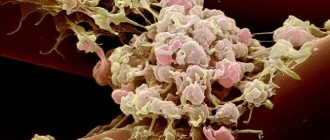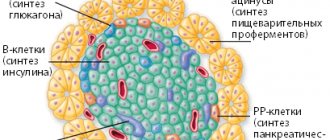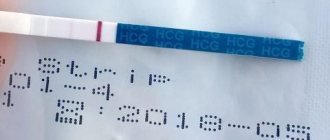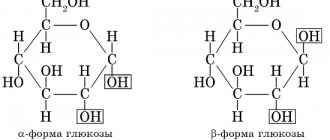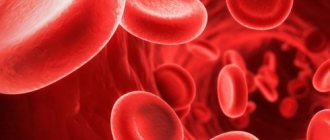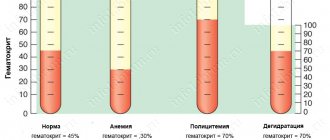Alpha-amylase is one of the enzymes of the digestive system, synthesized mainly by exocrine pancreatic cells and responsible for the breakdown of complex carbohydrate components of food, starch and glycogen into simple carbohydrates (glucose). This enzyme is produced in small quantities by the salivary glands and is part of saliva. Normally, a minimal amount of alpha-amylase enters the general bloodstream, since the pancreas has a very good blood supply. Passing through the kidneys, the enzyme is excreted in the urine.
In this regard, two diagnostic tests for the enzymatic activity of this class of amylase are used in laboratory diagnostics:
- Blood alpha amylase;
- Urinary diastasis (urinary amylase).
What is α-amylase
This is an enzyme that breaks down and helps digest complex carbohydrates - glycogen and starch ("amylon" translated from Greek - starch). It is produced mainly by the exocrine glands - salivary and pancreatic, a small amount is produced by the glands of the ovaries, fallopian tubes and lungs. The bulk of this enzyme is contained precisely in digestive juices: in saliva and pancreatic secretions. But a small concentration is also present in the blood serum, since the cells of any organs and tissues are constantly renewed.
The blood contains two fractions of α-amylase:
- pancreatic (P-fraction) – 40% of total amylase;
- salivary (S – type) - 60%.
However, the study of individual amylase fractions is rarely carried out, only for special indications. Most often, it is enough to determine total amylase. In combination with clinical symptoms, its increase confirms the diagnosis of acute pancreatitis.
This is the most common indication for this test. Amylase in this case will be increased precisely due to the pancreatic fraction. Its molecule is small and is well filtered through the renal tubules, so if its content in the blood increases, it will also be increased in the urine (alpha amylase in the urine is usually called diastase).
Preparation for analysis and collection of material
When studying the level of alpha-amylase in the blood, the biomaterial is serum. Blood sampling is performed in the morning, from 8 to 11 o'clock. The last meal should be light, at least 12 hours before the procedure. During this period you can drink water. In 30 minutes you need to stop smoking, physical activity, and avoid emotional stress. You must refrain from drinking alcohol for a week before the test.
Blood for research is taken from a vein using a syringe, or less commonly, a vacuum system. Once a sufficient volume (15–20 ml) has been obtained, the tube is tightly closed and placed in a box for further transportation to the laboratory. Immediately before the analysis, the blood is centrifuged and special drugs are injected, as a result of which the formed elements and coagulation factors are removed from it. The resulting serum is tested for alpha-amylase content by colorimetric kinetic methods, often with EPS or CNP-G3 substrate. The essence of the calculations is based on the fact that the rate of formation of a certain reaction product is proportional to the activity of the enzyme. The readiness of the research results is 1 business day, but in emergency situations it can be reduced to several hours.
Amylase content norm
Enzymes are proteins that catalyze the breakdown of complex substances. Their activity is usually measured in IU (international units). 1 IU of enzyme activity is taken to be the amount that catalyzes the breakdown of 1 µmol of a substance in 1 minute under standard conditions.
Starch was previously used as a digestible substrate when determining amylase activity, and iodine was used as an indicator (which, as is known, colors starch blue). The less intense the color of the substrate after its interaction with the serum under study, the greater the amylase activity in it.
Modern spectrophotometric methods are now used.
Normal levels of alpha amylase in adult women and men do not differ and average 20-100 IU/l, in urine - 10-124 IU/l. However, standards may vary from laboratory to laboratory.
In children, the production of this enzyme is much lower. Alpha amylase in newborns is produced in small quantities; as the digestive system grows and develops, its synthesis increases.
Alpha amylase, normal blood levels by age
| Age | Total alpha amylase | Pancreatic amylase |
| Newborns | Up to 8 U/l | 1-3 U/l |
| Children under 1 year | 5-65 U/l | 1-23 U/l |
| 1 year - 70 years | 25-125 U/l | 8-51 U/l |
| Over 70 years old | 20-160 U/l | 8-65 U/l |
See Symptoms of pancreatitis, Liver tests, Biochemical blood test, Ultrasound of the pancreas, Diet for pancreatitis, Pancreatic diseases and their symptoms,
Interpretation of deviations
Total amylase
During episodes of acute pancreatitis, serum amylase levels rise transiently, between 2 and 12 hours after the onset of the attack. Concentrations return to normal within the third or fourth day. The peak obtained between 12 and 72 hours is usually 4-6 times the maximum normal value, but in a significant number of patients the value increases less and often does not increase at all. However, it should be noted that the increase in enzyme activity is not proportional to the severity of the disorder.
In acute pancreatitis associated with hyperlipidemia, serum amylase may be masked and appear normal, possibly due to the influence of high lipid levels on the calorimetric readings of the test.
A significant portion of the enzyme is excreted in the urine, so the increase in serum activity corresponds to an increase in urinary amylase, which increases in many more patients than in serum, reaches higher levels, and continues to remain high for long periods.
In chronic silent pancreatitis, both serum activity and urinary amylase activity are usually lower than normal.
Total amylase is not a specific indicator of pancreatic function, since it is produced by various organs. High levels have also been found in other diseases and situations that do not involve the pancreas, such as:
- parotitis;
- obstruction of the salivary ducts;
- ectopic pregnancy;
- obstruction/intestinal flu.
In acute pancreatitis, amylase usually increases simultaneously with pancreatic lipase, but in some cases the latter may:
- increases longer;
- and remains at a high level longer.
Chronic pancreatitis is often associated with alcoholism. It may also be caused by injury or obstruction of the pancreatic ducts, or be associated with genetic disorders such as cystic fibrosis.
When is an α-amylase test prescribed?
- For any unclear abdominal pain, this test is prescribed, primarily to diagnose acute pancreatitis (in 75% of cases of this disease, multiple elevated levels of the enzyme are detected in both the blood and urine).
- For the diagnosis of chronic pancreatitis, the study of this enzyme is less important: in this case, alpha amylase is increased much less frequently. In more than half of the patients, its level remains normal, but if you examine fractions, then the excess of P-type amylase activity over S-type will be of great benefit for the diagnosis of chronic pancreatitis.
- To clarify the diagnosis of mumps - inflammation of the salivary glands. In this case, the S-fraction of the enzyme will be increased in the blood.
- To monitor treatment for pancreatic cancer.
- After operations in the pancreaticoduodenal zone.
What if the level is elevated?
A slight increase is acceptable if the person’s condition and well-being are not impaired. This may be due to emotional stress, heavy physical activity, and eating large amounts of carbohydrates.
A pathological increase in indicators occurs for the following reasons:
- excessive secretion of pancreatic juice;
- obstruction of circulation (strictures, stones, tumor);
- inflammation of the gland itself;
- viral or epidemic parotitis;
- peritonitis;
- ectopic pregnancy.
These problems do not appear on their own. As a rule, this is a consequence of infectious processes and pathological disorders of the gastrointestinal tract. When the indicators go off scale, the general condition of a person worsens. Weakness and fatigue appear. Possible pain in the right side, nausea, vomiting, diarrhea.
Reasons for increased alpha amylase in blood and urine
If damage occurs to the cells of the pancreas or salivary gland, their contents begin to be absorbed in large quantities into the blood and are also intensively excreted in the urine. Some is utilized in the liver. In diseases of the excretory organs (liver, kidneys), its level also increases.
Main causes of hyperamylasemia
Pancreatic diseases
- Acute pancreatitis. Elevated alpha-amylase is detected at the very beginning of the attack, reaches a maximum after 4-6 hours and gradually decreases after 3-4 days. In this case, the level can exceed the norm by 8-10 times.
- Exacerbation of chronic pancreatitis. In this case, the activity of alpha amylase increases 2-3 times. (see Medicines for chronic pancreatitis).
- Tumors, stones, pseudocysts in the pancreas.
Associated with diseases of neighboring organs
- Abdominal injury.
- Condition after operations on the abdominal organs and retroperitoneal space.
- An attack of hepatic colic. As the stone passes through the common bile duct, the enzyme level increases 3-4 times, then returns to normal after 48-72 hours.
Diseases accompanied by damage to the salivary glands
- Mumps (mumps).
- Bacterial mumps.
- Stomatitis.
- Neuralgia of the facial nerve.
- Narrowing of the salivary gland duct after radiation therapy in the head and neck area.
Conditions in which amylase utilization is reduced
- Renal failure - the excretion of amylase by the kidneys is impaired, which causes it to build up in the blood.
- Fibrosis or cirrhosis of the liver with impaired liver function, since liver cells are involved in the metabolism of this enzyme.
- Intestinal diseases: inflammatory processes, intestinal obstruction, peritonitis. As a result of these conditions, the enzyme is intensively absorbed into the blood.
Other states
- Ectopic pregnancy.
- Mammary cancer.
- Pneumonia.
- Tuberculosis.
- Lung cancer
- Ovarian cancer.
- Pheochromocytoma.
- Blood diseases (myeloma).
- Ketoacidosis in diabetes.
- Macroamylasemia is a rare congenital condition where amylase forms compounds with large proteins and therefore cannot be filtered by the kidneys.
- Alcohol intoxication.
- Taking certain medications - glucocorticoids, opiates, tetracycline, furosemide.
Treatment of disorders
The only way to normalize amylase concentrations is to identify and eliminate the cause of the condition. A single biochemical blood test is usually not enough to accurately determine the disease, so patients require a comprehensive study. It includes ultrasound of the abdominal cavity, general blood test, endoscopic examination of the digestive system (for example, gastroduodenoscopy).
Based on the results, the doctor draws conclusions and begins to treat the pathology.
In some conditions (tumors, blockage of the bile ducts, necrosis of pancreatic tissue, peritonitis), patients require immediate surgical intervention.
The treatment regimen depends on the disease, severity of symptoms, age and general condition of the patient. In case of disturbances in the functioning of the pancreas and inflammation of the tissues of the organ, antibiotics and drugs are prescribed that reduce the load on the organ, reduce blood circulation and suppress the excessive production of enzymes. For diabetes mellitus, renal failure, cholelithiasis and other pathologies, other treatment regimens are prescribed aimed at reducing unpleasant symptoms and eliminating pathological processes.
Decreased alpha amylase levels
Detection of a decrease in this enzyme in the blood has less diagnostic value than an increase. Typically, this situation indicates massive necrosis of secretion-producing pancreatic cells during acute inflammation, or a decrease in their number during a chronic process.
Reduced alpha amylase in serum can be an additional criterion for diagnosing the following conditions:
- Pancreatic necrosis.
- Chronic pancreatitis with severe enzymatic deficiency (in patients suffering from this disease for a long time).
- Severe hepatitis.
- Thyrotoxicosis.
- Cystic fibrosis is a systemic disease affecting the exocrine glands.
A decrease in amylase is observed in cases of massive burns, toxicosis of pregnancy, and diabetes mellitus. Elevated cholesterol and triglyceride levels can also lower amylase levels.
High level reasons.
Taking certain medications can increase enzyme levels
In some cases, elevated test results are not a sign of inflammatory processes. One of the reasons may be improper preparation for testing (drinking alcohol-containing drinks, smoking, stress before blood collection). Another reason is taking a number of medications that can affect the level of biologically active substances (diuretics, hormonals, painkillers).
During pregnancy, enzyme levels deviate from normal to a greater and lesser extent as the fetus develops. In the first trimester of pregnancy, the amount of amylase decreases. Then it begins to grow, reaching maximum values by the 34th week of pregnancy. At the last stage, the amylase content decreases again.
Poisoning provokes an increase in amylase for a short period. And the main reasons for the high level are:
- destructive processes in the tissues of the pancreas,
- diseases of the glandular organs,
- tumor formation,
- diabetes,
- inflammation of the abdominal organs,
- intoxication of the body,
- cystic formations,
- destruction of kidney tissue,
- hyperamylasemia,
- ectopic pregnancy or termination of pregnancy.
Practical advice
- The α-amylase test is not a routine test; it is prescribed only for certain indications. There is no point in donating blood for this enzyme “just in case” if nothing is bothering you. If acute pancreatitis is suspected, the patient is almost always immediately examined laboratory, including for amylase.
- An increase in amylase by 5 or more times in combination with abdominal pain almost always indicates pancreatitis.
- If you suspect chronic pancreatitis, you need to donate blood for amylase during a painful attack. It has a fairly fast half-life, and individual exacerbations of the chronic process are quite difficult to detect; after 2-3 days, the level of pancreatic enzyme in the blood decreases to normal. This is the case when you can donate blood yourself and come to the doctor with a ready-made test.
- The simultaneous increase in amylase and lipase increases the specificity of diagnosis for pancreatitis.
- Asymptomatic, “random” detection of elevated alpha amylase in the blood is most likely not associated with pancreatic pathology. In this case, it is necessary to study the enzyme fractions: S and P-types. If the S-fraction predominates, it is necessary to look for diseases not related to the pancreas.
- If alpha amylase in the blood is increased and in the urine is decreased, this indicates a violation of its excretion by the kidneys.
- Some conditions can provoke an increase in amylase: pregnancy, taking contraceptives, corticosteroids, furosemide, analgesics.
Author:
Akimova Valentina Konstantinova general practitioner
Prevention.
Preventing high amylase levels - healthy lifestyle
A healthy lifestyle and proper nutrition will help prevent the growth of amylase. The basic rules for prevention are:
- Fractional meals. The amount of food consumed per day should be evenly distributed into small portions. Overeating, as well as snacking at night, leads to a failure in the production of amylase.
- Optimal physical activity. Movement is necessary for any body, but the load should not be excessive.
- Sufficient time for rest. Lack of sleep provokes disruption in all body functions, including enzyme metabolism.
- Avoiding alcohol-containing products or reducing the frequency of their use to a minimum.
- Rational consumption of carbohydrates. Carbohydrates play an important role in human nutrition, but not all of them are healthy. The healthiest carbohydrates are grains, vegetables, fruits, and cereals. Daily consumption of sugar and sugar-based products can cause disruption of amylase circulation.
- Minimizing the intake of fatty, spice-rich foods into the body. Too frequent consumption of such dietary components results in enzyme retention in the pancreas.
- Healthy emotional state. A constant state of stress increases amylase levels and leads to negative consequences.
A healthy lifestyle serves as a fundamental tool for supporting natural processes in the body and is a preventative measure for avoiding any diseases.
Potential Amylase Side Effects and Precautions
Digestive enzymes are virtually non-toxic and usually do not cause side effects. Occasional side effects of digestive enzymes may include mild gastrointestinal upset, diarrhea, or allergic reactions. If any of these effects persist or worsen, you should stop using the supplement and talk to your healthcare professional.
If your supplement contains the digestive enzyme bromelain, be aware that it may have cross-reactivity. And may provoke allergic symptoms in people sensitive to wheat, celery, papain, carrots, fennel, cypress pollen and grass pollen. As well as a family of plants that includes ragweed, chrysanthemums, marigolds, daisies and echinacea. If you are allergic to any of these foods or plants, you may find that you are allergic to bromelain and vice versa.
Digestive enzymes should only be combined with blood thinners such as warfarin (Coumadin) under the supervision of a physician. Combining bromelain and papain with blood thinner prescriptions may further increase the risk of bruising and bleeding. Some evidence also suggests that bromelain may enhance the absorption of certain antibiotics, particularly amoxicillin and tetracycline. Digestive enzymes may also enhance the absorption of sedatives such as benzodiazepines. Therefore, digestive enzyme supplements should not be combined with sedatives.
Tell your doctor right away if you have any serious side effects after taking digestive enzymes. These include severe abdominal discomfort, joint pain, frequent or painful urination, or an allergic reaction.
TOP 5 Health benefits of amylase
How can amylase help our health? Well, apart from the most important function of properly digesting carbohydrates, it has many other health benefits. They will probably surprise you.
1.The action of amylase in the body in improving digestion
Our mouth is where mechanical and chemical breakdown of food occurs through the combined use of teeth, jaws and saliva. Amylase is vital for the digestive process. Because it is necessary to process any starches in our diet, which are the main source of glucose. Glucose is the main sugar molecule that the body uses for energy.
It is important that we combine the body's natural ability to produce amylase with our ability to chew food. Why is this so important? Because if food is not broken down properly in the mouth, then more work is added to the body. It needs to digest and extract nutrients and energy from what we eat. By chewing thoroughly, we give amylase more time to process the consumed carbohydrates. And the more time amylase has to work, the better and faster overall digestion will be.
In addition, pancreatic cells produce another form of amylase called pancreatic amylase. It passes through a duct to reach the small intestine. Pancreatic amylase completes the absorption of carbohydrates.
2.The action of amylase in the body is to increase energy
Food not only supplies our body with nutrients, but also enriches it with the energy necessary for daily work. Glucose is the main sugar molecule used by the body to produce energy. And while high glucose levels are harmful (such as diabetes), you need to get glucose from healthy sources in your diet.
Amylases in the body break down starch into two sugar units, maltose and isomaltose, and then other enzymes called maltase and isomaltase. It then hydrolyzes these two sugars into the separate monosaccharide glucose. Foods high in starch include breads, cereals, cereals, pasta, rice, beans, corn, potatoes and peas. If it weren't for amylase, our body wouldn't be able to use food as efficiently to nourish it.
3.The action of amylase in the body is antidiabetic
A 2013 study published in the Journal of Clinical and Diagnostic Research was designed to measure serum amylase, a blood glucose level. And also the serum lipid profile of 110 patients with type 2 diabetes mellitus compared with healthy people of the same age and sex. The study found that in diabetic patients, when blood sugar levels are high, serum amylase activity is significantly lower. This finding reflects the reflection of the pancreas and speaks to the importance of a healthy pancreas producing the required amount of amylase.
Another study found that low serum amylase levels are associated with an increased risk of metabolic disorders. Such as diabetes and metabolic syndrome. Together, these studies demonstrate the ability of this digestive enzyme to maintain normal blood sugar levels. They also help treat or reverse the symptoms of diabetes.
4.The action of amylase in the body - an alternative treatment for cancer
For example, people choosing to fight cancer holistically sometimes include digestive enzymes in their natural cancer treatment plan. The Gonzalez Regimen, developed by Dr. Nicholas Gonzalez, is one holistic approach to cancer. It combines prescribed diets, nutritional supplements, coffee enemas and pancreatic enzymes. The regimen is aimed at detoxifying the body, correcting imbalances in the nervous system, leading to disruption of general health. As well as maintaining natural immune processes. Pancreatic enzymes are believed to be the main agents in the regimen that have direct antitumor effects.
Enzymes are a key aspect of the Kelly Cancer Metabolic Protocol developed by Dr. William Donald Kelly. Kelly and the previously famous embryologist John Bird believed that
“In order to defeat cancer, you cannot create a new method of protection that does not imitate the human body. Rather, it is necessary to create a method of protection that acts in the same way as the human body."
And the human body uses proteolytic enzymes from the pancreas in the natural fight against cancer.
Both of these treatments are controversial. However, some traditional and reputable cancer treatment centers even agree that
“Patients suffering from cancer, especially pancreatic cancer, can greatly benefit from pancreatic enzymes.”
Pancreatic enzyme deficiencies are very common among people with pancreatic cancer. And when the pancreas does not produce enough enzymes to break down food, pancreatic enzyme products are needed. Doctors sometimes prescribe digestive enzymes, including pancreatic enzymes, to patients who have conditions that cause poor absorption.
Cancer itself and conventional cancer treatments are also known to affect the production and supply of digestive enzymes and insulin. Therefore, patients should also use natural methods.
5.Action of amylase in the body as stress monitoring
Stress is by far one of the worst things in the world for our health, especially chronic stress. Research shows that amylase can be a very useful and accurate marker of stress levels.
One study examined whether the salivary enzyme alpha-amylase could indicate stress-reactive changes in the body. The researchers repeatedly measured salivary alpha-amylase and salivary cortisol. As well as catecholamines and cardiovascular activity in plasma before, during and after 30 young people who completed the Trier Social Stress Test (TSST). The results showed that salivary alpha-amylase is sensitive to psychosocial stress. It can be a very useful additional parameter for measuring stress in people.


